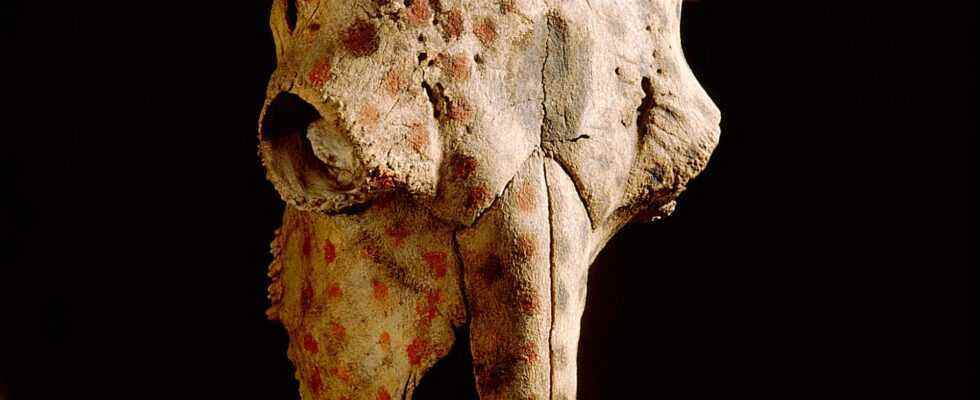How dangerous the buffalo hunt was
While Writing-on-Stone was a Blackfoot spiritual and cultural center, the bluffs of Head-Smashed-In Buffalo Jump offer a glimpse into everyday life in a time when there were no horses or guns on the prairies. At that time the buffalo hunt was considerably more difficult and risky. After all, a bison bull has a shoulder height of 1.75 meters – the animal meets a human at eye level. In addition, adult bison measure an average of three meters in length and have a highly dangerous fighting weight of up to 800 kilograms. About half as heavy, cows are also clearly superior to humans. Although the calves are born as lightweights at around 18 kilograms, they remain close to their mother for a whole year and are well protected by her. And since even one-year-old bison are anything but easy prey at 200 to 300 kilograms, buffalo hunting was a real challenge before the Blackfoot used horses and guns from around 1750.
Although the bison were difficult to kill, they were particularly attractive prey for humans: meat and fat provided food, clothing and tents could be made from hides and skins, tools were made from the bones and the horns were converted into drinking vessels or spoons carved from it.
Disguised as bison and wolf on the hunt
Bison hunting was a difficult task simply because the animals grazed in groups on the prairies of modern-day Alberta and northern Montana. Hardly any trees grow on these plains, so the hunters could not find suitable cover to sneak up on the animals. The best chances came only at lunchtime. Then the bison rested in the grass and were busy chewing the cud. Because the buffalo can’t see very well, the hunters slowly approached on hands and knees, upwind.
Archaeologist Jack W. Brink of the Royal Alberta Museum has reconstructed how the hunt went. Two hunters often tried their luck together. One disguised himself with the skin of a bison calf, the other wore a wolf’s skin complete with a skull. When the buffalo discovered the supposed robber, they were hardly worried at first because a wolf had relatively little chance against an adult bison. The situation changed abruptly when the hunter in the bison skin began to bleat like a calf. If the supposed wolf then seemed to attack the little bison, the cows were alarmed, ran over and thus came within range of the hunters. With this quite risky method they then tried to kill the animals.
A Blackfoot family secured a livelihood for several days by stalking. However, to stock up for the long winter months, this strategy did not produce enough loot. This is possibly why hunters and gatherers came up with the idea of driving bison over a cliff 10,000 years ago in what is now Texas in order to capture numerous animals at once.
The oldest known evidence of such a mass hunt was in the ten-meter-thick layer of Head-Smashed-In Buffalo Jump. 14C-dating on the deepest bison bones gave an age of 5800 years. By this time, hunter-gatherers seem to have been chasing herds of bison over the cliffs. But people had been visiting the area for a long time. A stream rises in a small valley nearby, where two stone spearheads were found. They prove that people roamed there around 9000 years ago. It is not yet known whether they only passed through the region at the time, set up their winter camp in the gorge or were already hunting cliffs.
